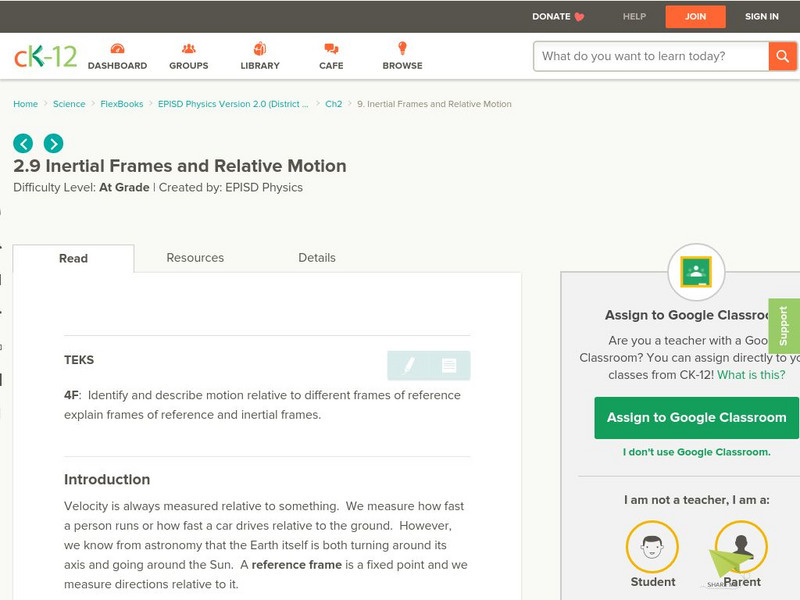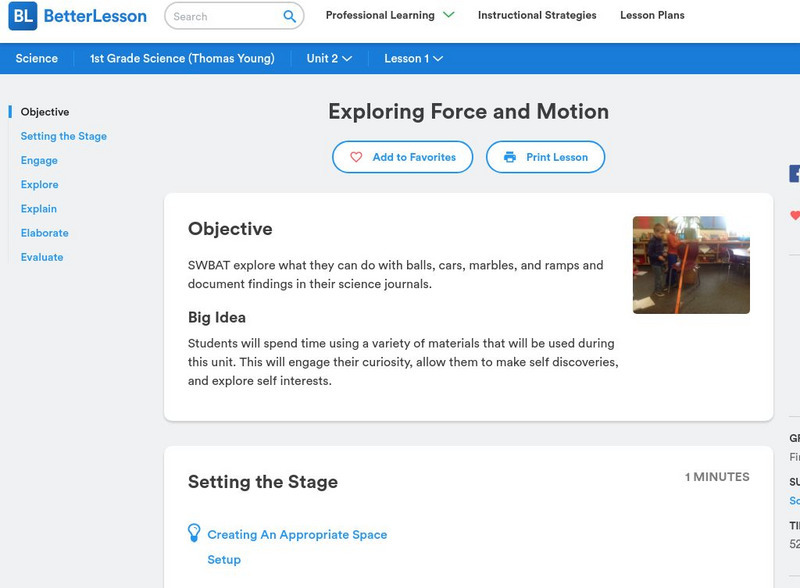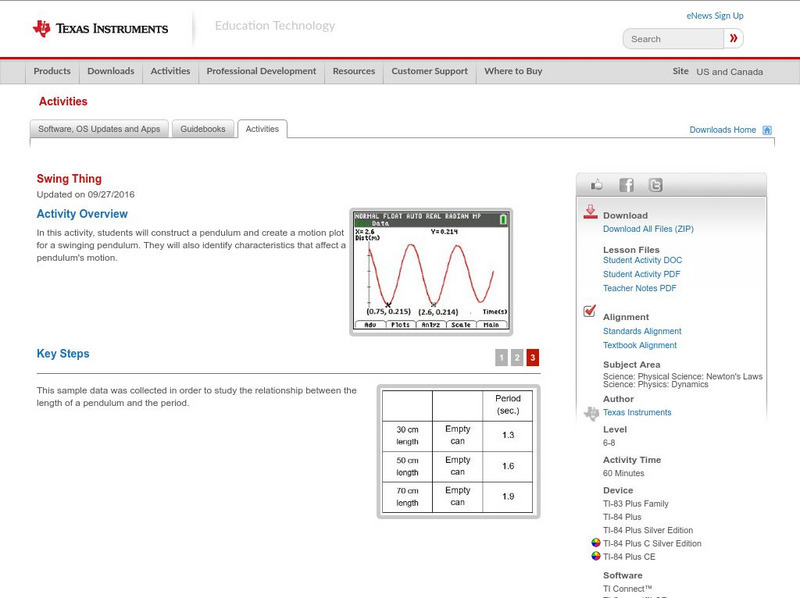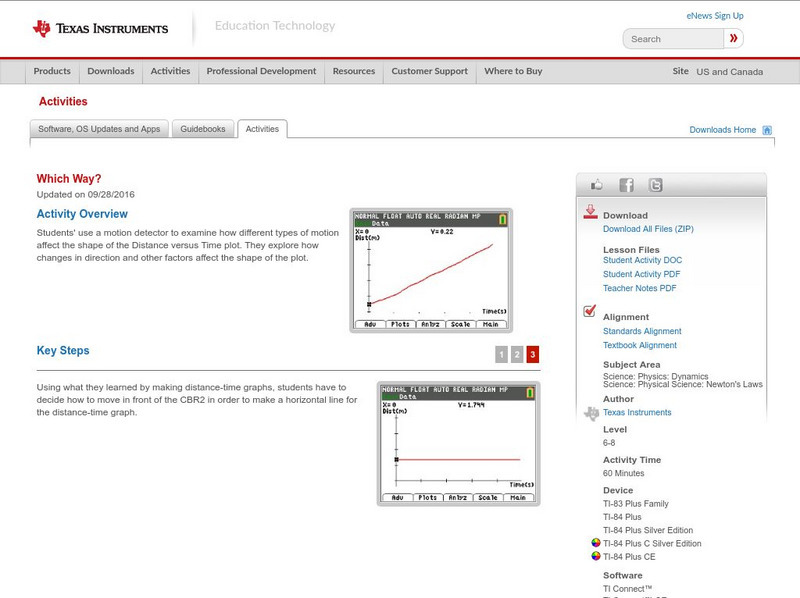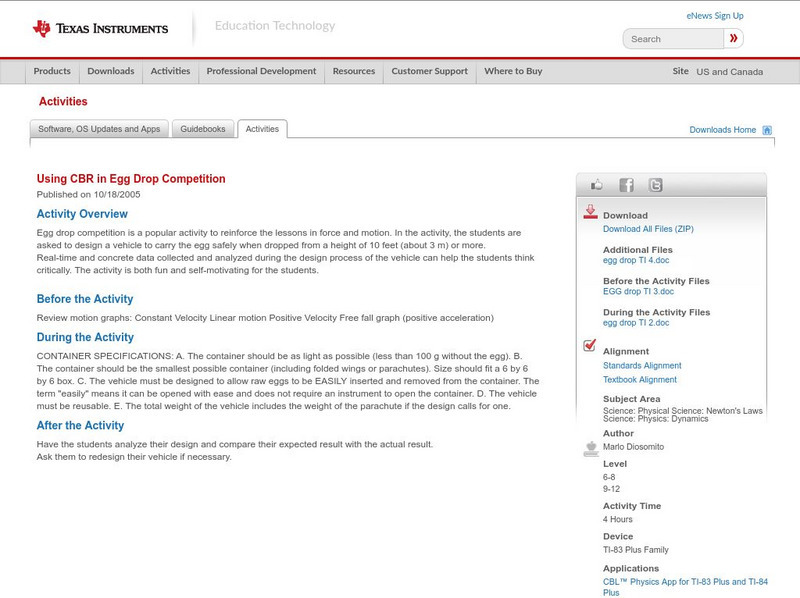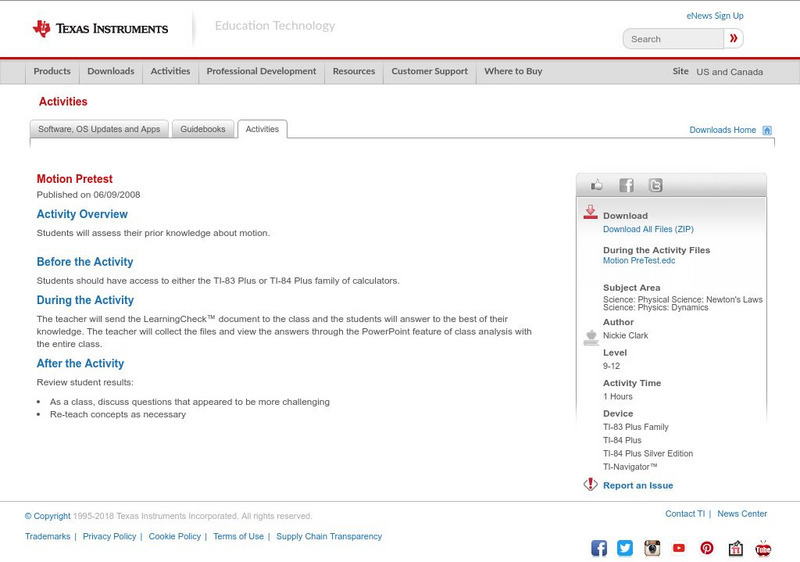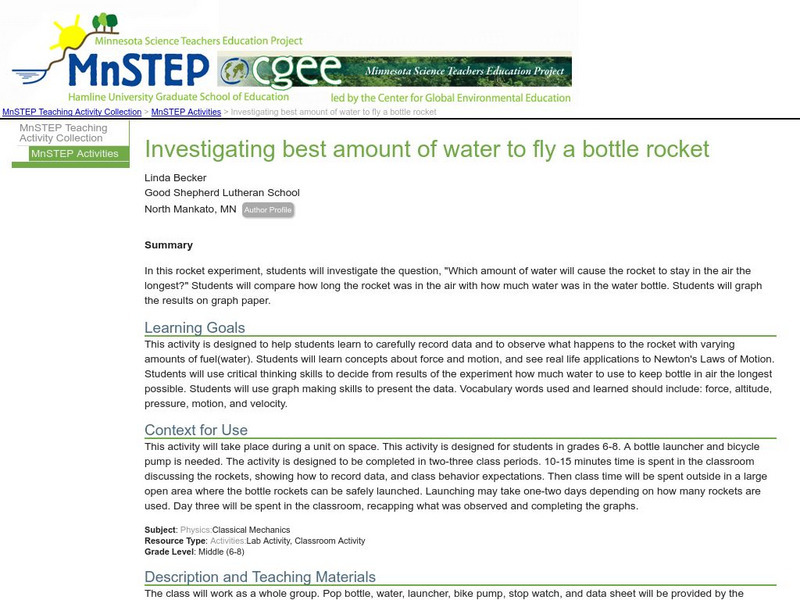CK-12 Foundation
Ck 12: Episd: Velocity Time Graphs
[Free Registration/Login may be required to access all resource tools.] Break down graphs illustrating velocity and time to understand motion.
CK-12 Foundation
Ck 12: Episd: Inertial Frames and Relative Motion
[Free Registration/Login may be required to access all resource tools.] Relative motion is always measured with a frame of reference. Evaluate a variety of frames of reference and inertial frames to understand relative motion.
Better Lesson
Better Lesson: Exploring Force and Motion
Students will explore what they can do with balls, cars, marbles, and ramps and document findings in their science journals. This will engage their curiosity, allow them to make self-discoveries, and explore self-interests.
Utah Education Network
Uen: Trb 3:3 Investigation 5 Balloon Rockets
Learn about the relationship between the force applied to an object and the resulting motion.
PBS
Pbs: Sesame Street: Science
A collection of interactives, videos, and documents on a variety science concepts.
CK-12 Foundation
Ck 12: Physics: Motion Study Guide
This study guide on motion covers some key vocabulary and terms to describe motion: displacement vs. distance, acceleration, speed vs. velocity, and instantaneous vs. average. It includes graphs showing distance vs. time, velocity vs....
PBS
Pbs Learning Media: Curious George Stem: Ramp N Roll Lesson Plan
Explore how different objects move down ramps in this Curious George lesson. Students will make predictions about how objects will roll down different heights of ramps.
Discovery Education
Discovery Education: 3 M Young Scientist Lab: Salt Engineering
Salt crystals demonstrate how forces can be directed in mechanical systems.
Science Buddies
Science Buddies: Two Stage Balloon Rocket
Students will build a multi-stage balloon rocket that they can launch across the classroom while learning about real space flight and Newton's laws of motion.
Other
Bscs: Forces Lesson 2: Representing Forces
What makes something start to move? What makes something stop moving or change direction? This hands-on lesson will show students that forces acting on an object have a strength and a direction that can be represented by arrows of...
Other
Bscs: Forces and Motion Content Background Document
In this document, we will try to answer a fundamental question of physical science, "Why do things start to move, slow down, speed up, stop moving or change direction?" In answering these core questions we can develop concepts that can...
E-learning for Kids
E Learning for Kids: Science: Indian Ocean: Pirates: What Makes Things Move?
Join Pirates Slim Jim and Easy Finn on their boat. There, learn more about how to move objects.
Texas Instruments
Texas Instruments: Swing Thing
In this activity, students will construct a pendulum and create a motion plot for a swinging pendulum. They will also identify characteristics that affect a pendulum's motion.
Texas Instruments
Texas Instruments: Which Way?
Students' use a motion detector to examine how different types of motion affect the shape of the distance versus time plot. They explore how changes in direction and other factors affect the shape of the plot.
Texas Instruments
Texas Instruments: Shape Up!
In this activity, students can use the motion detector to record motion, and observe how the direction of movement, speed of travel, and the rate of change of direction and speed affect the shape of a distance-time plot.
Texas Instruments
Texas Instruments: Using Cbr in Egg Drop Competition
Egg drop competition is a popular activity to reinforce the lessons in force and motion. In the activity, the students are asked to design a vehicle to carry the egg safely when dropped from a height of 10 feet (about 3 m) or more....
Texas Instruments
Texas Instruments: Graphing Motion
This activity assesses students' knowledge and understanding of graphing motion.
Texas Instruments
Texas Instruments: Motion Pretest
Students will take a pretest to assess their knowledge about motion in a physical science class.
Science Education Resource Center at Carleton College
Serc: Investigating Best Amount of Water to Fly a Bottle Rocket
In this rocket experiment, young scholars will investigate the question, "Which amount of water will cause the rocket to stay in the air the longest?" Students will compare how long the rocket was in the air with how much water was in...
Science Education Resource Center at Carleton College
Serc:investigating Friction:investigate How the Force of Friction Opposes Motion
For this investigation, students will learn that speed, velocity, and changes in velocity are the result of the action of forces on objects such as friction. They will be able to explain how the force of friction opposes motion by...
Science Education Resource Center at Carleton College
Serc: Egg Drop
In this physics lab, students build a container to safely deliver two eggs from the top of the school. Students calculate average velocity, acceleration, momentum, and the amount of force as it hits the ground. If their egg breaks, they...
Science Education Resource Center at Carleton College
Serc: Investigating Motion: Paths of a Marble
In this activity, children will investigate the paths that marbles take once set into motion and then how to change those paths, noting if and how they change.
Science Education Resource Center at Carleton College
Serc: Investigating Motion: What Causes Objects to Move?
Students will have an opportunity to determine what makes everyday objects move. Students will be given objects and asked to make predictions on how far each object will move after they blow on it. Then they will measure the distance and...
Science Education Resource Center at Carleton College
Serc: Investigating Forces: Balloon Car Activity
In this activity, teams of students build a car out of common materials which is then propelled by the release of air out of a balloon and must travel a minimum distance. The activity is then extended to a competition to build the car...



